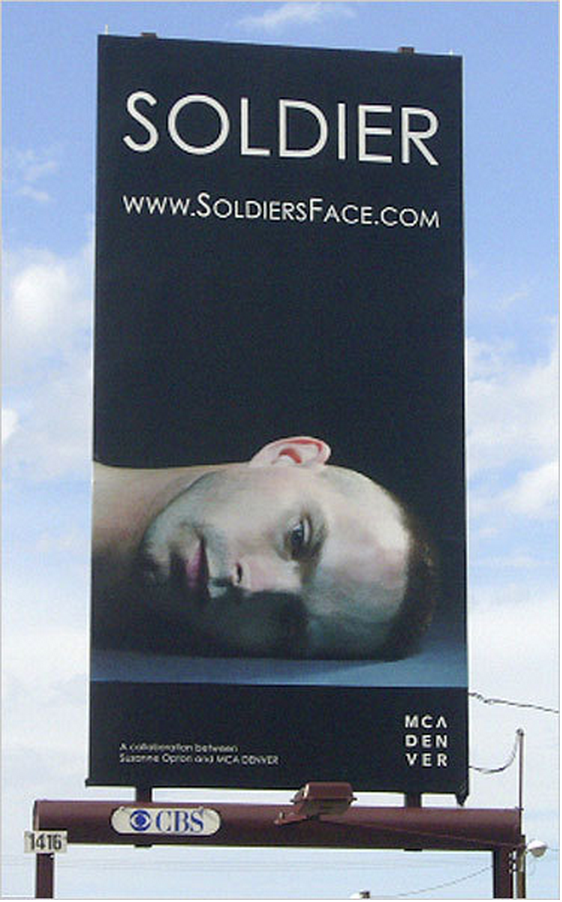The New York Times had a piece yesterday about a series of billboard images by artist Suzanne Opton that were supposed to be on view in Minneapolis and St. Paul during upcoming RNC. However, the owners of the billboards, CBS Outdoor, has decided to cancel the contract.
From the NYT:
Ms. Opton’s photographs, part of a series called the Soldier Billboard Project, have been displayed on billboards in Syracuse, and one was on a billboard in Denver during the Democratic National Convention. But the company that owns the Minneapolis-St. Paul billboards, CBS Outdoor, part of the larger media conglomerate, canceled her contract last week, having decided that the pictures sent a confusing and inappropriate message.
“When we looked at the images,” said Jodi Senese, the company’s executive vice president for marketing, “the soldiers depicted clearly looked to us like they were representing deceased solders.”
I wish I could say I was amazed by this, but apparently we've entered into an era where even the most unshocking photos of soldiers are now unacceptable to the people who claim to support them the most, and who rely on them for their current and future wars ("Bomb bomb bomb, bomb bomb Iran"). It's worth noting that, according to the NYT, "one was on a billboard in Denver during the Democratic National Convention. But the company that owns the Minneapolis-St. Paul billboards, CBS Outdoor, part of the larger media conglomerate, canceled her contract last week, having decided that the pictures sent a confusing and inappropriate message." The message is confusing to whom? Obviously not the Democrats, otherwise they would have pulled the billboards earlier.
Of course, the US has a long history of controlling images of soldiers during war, since their impact on people can be so powerful and used effectively to motivate supporters or silence critics. Chapter one of George Roeder's The Censored War is titled "Rationing Death." It begins:
Modern warfare produces corpses in lavish abundance. Nonetheless, during World War II the United States government rationed photographs of the American dead more stingily than scarce commodities such as sugar, leather shoes, and rubber tires. Officials used images of pain and death to respond to what they perceived to be the public-relations needs of each phase of the war. "Public Relations" often meant manipulation of opinion in ways that served narrowly conceived military, political, or business purposes.
I don't think anyone could argue that this practice has changed since the '40s. Images can be very powerful.
The article doesn't mention whether the artist plans to sue on First Amendment grounds, and I'd be curious to see if this leads anywhere. Either way, it is very telling to note which types of images, and which contexts, are deemed appropriate for political audiences. Consider, for example, this comment from Digby, blogging at the DNC last week:
There are trucks with pictures of fetuses on them driving around and lots of middle aged men holding up photos of bloody masses while screaming about how we shouldn't even be allowed to vote. They are ubiquitous.
I wonder what would happen if a bunch of anti-war protestors showed up in Minneapolis with huge posters of dead and maimed Iraqi children? Do you think the police and the crowds would be as tolerant? How about pictures of dead children whose parents didn't have health care or dead children who died of diseases for which stem cell research may have a cure?
Somehow I doubt it. Graphically showing the death of fully formed humans if they are outside the womb is considered in bad taste and unnecessarily provocative. They would probably consider it disturbing the peace.
Image: via the NYT



